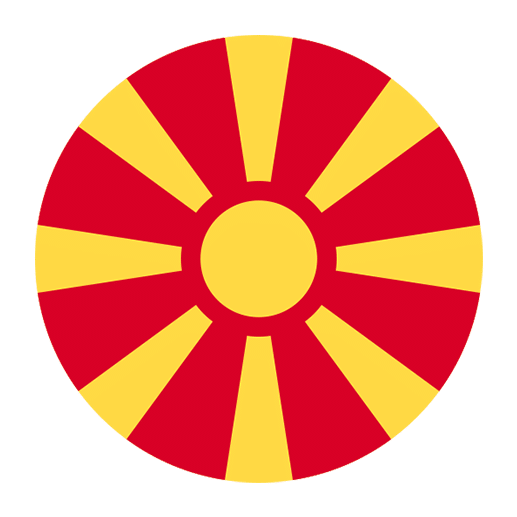Learning a new language is a multifaceted journey, and the path to mastering Standard Macedonian is no exception. As with many languages, the presence of various dialects can both enrich and complicate the learning process. In the context of Macedonian, a South Slavic language spoken primarily in North Macedonia, understanding the dialectical landscape is crucial for language learners. This article delves into the impact of dialects on learning Standard Macedonian, offering insights into the benefits and challenges that learners might encounter.
The Linguistic Landscape of Macedonian
Macedonian is the official language of North Macedonia and belongs to the Eastern subgroup of the South Slavic languages. It is closely related to Bulgarian and shares similarities with Serbian, Croatian, and other South Slavic languages. The standardized form of Macedonian, known as Standard Macedonian, was codified in the mid-20th century and is based on the central dialects of the region, particularly those around the city of Veles.
However, Macedonian is not a monolithic language. The country is home to a rich tapestry of dialects, each with its own unique characteristics. These dialects can be broadly categorized into three groups: Western, Eastern, and Northern. Each group encompasses numerous sub-dialects, which can vary significantly in terms of phonology, morphology, syntax, and vocabulary.
Western Dialects
The Western dialects are spoken in the western part of North Macedonia and parts of Albania. They are known for certain phonetic features, such as the preservation of the vowel /ъ/ and the presence of nasal vowels. These dialects can differ quite markedly from Standard Macedonian, particularly in terms of pronunciation and certain grammatical structures.
Eastern Dialects
The Eastern dialects are prevalent in the eastern regions of North Macedonia and parts of Bulgaria. These dialects are characterized by a more conservative phonological system, retaining features that have been lost in the Western dialects. They also exhibit differences in verb conjugation and the use of definite articles.
Northern Dialects
The Northern dialects are spoken in the northern parts of North Macedonia, as well as in parts of Serbia and Kosovo. These dialects show a mix of features from both the Western and Eastern groups, along with some unique characteristics. They can be particularly challenging for learners due to their hybrid nature.
The Benefits of Dialectal Knowledge
Enhanced Cultural Understanding
One of the primary benefits of being aware of and learning about Macedonian dialects is the enhanced cultural understanding it provides. Dialects are a window into the history, traditions, and identity of different regions. By familiarizing themselves with various dialects, learners gain a deeper appreciation for the cultural diversity within North Macedonia. This cultural insight can be particularly valuable for those interested in the social and historical context of the language.
Improved Comprehension
Exposure to different dialects can also improve a learner’s overall comprehension skills. While Standard Macedonian is the form taught in educational settings and used in formal communication, dialectal variations are common in everyday conversations. Understanding these variations can help learners better navigate real-life interactions, whether they are traveling, conducting business, or engaging in social activities in North Macedonia.
Expanded Vocabulary
Dialectal knowledge can significantly expand a learner’s vocabulary. Each dialect often has its own set of words and expressions that are not present in Standard Macedonian. By learning these regional terms, learners can enrich their linguistic repertoire and become more versatile speakers. This expanded vocabulary can also aid in understanding regional literature, music, and folklore.
The Challenges of Dialectal Variation
Phonological Differences
One of the primary challenges posed by dialectal variation is the phonological differences between dialects and Standard Macedonian. Pronunciation can vary widely, with certain sounds being pronounced differently or even omitted in some dialects. For example, the Western dialects’ preservation of the vowel /ъ/ can be confusing for learners accustomed to the phonetic patterns of Standard Macedonian. These variations can make it difficult for learners to understand spoken language and to be understood by native speakers.
Grammatical Variations
Grammatical differences between dialects and Standard Macedonian can also be a significant hurdle. Dialects may have unique verb conjugations, noun declensions, and syntactic structures that differ from the standard form. For instance, the use of definite articles can vary between dialects, leading to potential confusion for learners. Mastering these grammatical nuances requires additional study and practice, which can be time-consuming and challenging.
Lexical Divergence
The lexical divergence between dialects and Standard Macedonian can pose another challenge. Dialects often have their own sets of words and expressions that are not used in the standard form. This can lead to misunderstandings and communication difficulties, especially for learners who are not familiar with these regional terms. Additionally, the same word might have different meanings in different dialects, further complicating the learning process.
Strategies for Navigating Dialectal Variation
Exposure and Immersion
One effective strategy for navigating dialectal variation is exposure and immersion. Spending time in different regions of North Macedonia and interacting with native speakers can provide learners with firsthand experience of dialectal differences. Immersion can help learners develop an ear for regional accents and familiarize themselves with local vocabulary and expressions. Language exchange programs, homestays, and travel can all be valuable opportunities for immersion.
Use of Multimedia Resources
Multimedia resources can also be a valuable tool for learners. Watching films, television shows, and videos in different dialects can expose learners to various accents and speech patterns. Listening to regional music and radio programs can help learners become accustomed to the phonological and lexical differences between dialects. Online platforms and language learning apps often offer dialect-specific content that can supplement traditional language courses.
Dialect-Specific Study Materials
Using dialect-specific study materials can be particularly beneficial for learners who want to focus on a specific regional variant of Macedonian. Textbooks, dictionaries, and grammar guides that cater to specific dialects can provide learners with targeted instruction and practice. Additionally, working with a tutor or language partner who speaks the desired dialect can offer personalized guidance and feedback.
Practice and Patience
Finally, practice and patience are essential when navigating dialectal variation. Learning a language is a gradual process, and mastering the nuances of different dialects takes time and effort. Regular practice, whether through speaking, listening, reading, or writing, is crucial for building proficiency. Learners should also be patient with themselves and recognize that making mistakes is a natural part of the learning process.
The Role of Standard Macedonian in Language Learning
Foundation and Consistency
Standard Macedonian serves as the foundation for language learning and provides a consistent framework for instruction. It is the form of the language used in educational settings, official communications, and the media. For learners, mastering Standard Macedonian is essential for achieving a strong linguistic foundation. This standard form offers consistency in grammar, vocabulary, and pronunciation, which is crucial for building a solid understanding of the language.
Bridging Dialectal Gaps
Once learners have a strong grasp of Standard Macedonian, they are better equipped to navigate the dialectal landscape. The standard form serves as a reference point, helping learners identify and understand the variations they encounter in different dialects. Knowledge of Standard Macedonian can bridge the gaps between regional variants, enabling learners to communicate effectively across different linguistic contexts.
Access to Resources
Standard Macedonian also provides learners with access to a wide range of resources. Most language courses, textbooks, dictionaries, and learning materials are based on the standard form of the language. This wealth of resources supports learners in building a comprehensive understanding of Macedonian. Additionally, proficiency in Standard Macedonian allows learners to engage with national literature, media, and academic materials.
Conclusion
The impact of dialects on learning Standard Macedonian is a complex and multifaceted issue. While dialectal variation can present challenges in terms of phonology, grammar, and vocabulary, it also offers significant benefits, including enhanced cultural understanding, improved comprehension, and expanded vocabulary. By employing strategies such as exposure and immersion, using multimedia resources, and practicing patience, learners can navigate the dialectal landscape effectively.
Ultimately, mastering Standard Macedonian provides a strong foundation for understanding and appreciating the rich linguistic diversity of North Macedonia. As learners progress in their language journey, they can embrace the dialectal variations that add depth and richness to the Macedonian language. Whether for travel, business, or personal enrichment, the ability to navigate both the standard form and regional dialects of Macedonian opens up a world of opportunities for meaningful communication and cultural connection.

